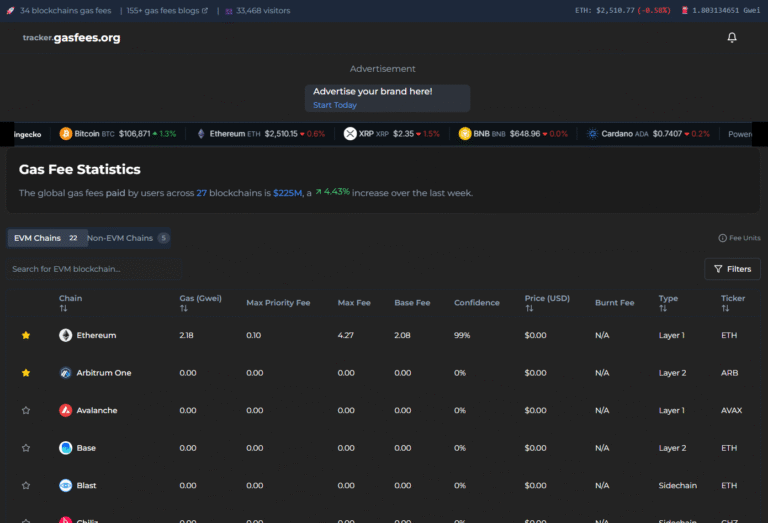Miners vs. Validators: Who Determines Gas Fees?
The world of cryptocurrency can feel complicated, especially when it comes to understanding gas fees. Gas fees play a crucial role in blockchain networks, but who determines them—miners or validators? Let’s explore the connections between these two and the dynamics behind gas fees so you can better understand how the system functions.
Understanding Gas Fees
Gas fees are an essential part of blockchain transactions, enabling smooth operations across decentralized networks. Whether you’re transferring funds, executing contracts, or minting tokens, gas fees factor into every interaction.
Definition of Gas Fees
In simple terms, gas fees are payments made to compensate validators (or miners) for using computational power to process transactions. Think of it like a toll fee you pay on a highway—your transaction only moves forward after you pay the fee. These fees keep the blockchain network secure and ensure users prioritize necessary transactions.
For more insight into what gas fees are and their role in cryptocurrency systems, check out this informative guide by CoinGecko.
Calculation of Gas Fees
How, exactly, are gas fees determined? They rely on multiple factors: network demand, transaction size, and complexity. The more congested the network, the higher the fees. For instance, during high-traffic periods, users may offer higher gas fees to have their transactions processed faster. It’s a dynamic system shaped largely by blockchain economics.
Want a deeper dive into calculating gas fees? This piece from Ecos explains it well.
The Role of Miners
Miners are the backbone of blockchain networks that use Proof of Work (PoW). They’re responsible for validating transactions and securing the network through computational effort.
Transaction Validation Process
Miners validate transactions by solving complex mathematical puzzles. Once a solution is found, the transaction bundle (or block) is added to the blockchain. This process underpins the integrity of PoW-based networks like Bitcoin.
Incentives for Miners
Gas fees are part of the reward structure for miners. They complement block rewards (newly minted coins gifted upon mining a block). Notably, miners prioritize transactions that feature higher gas fees, as they yield better returns. Consequently, competitive gas pricing often arises during peak network activity.
If you’d like to learn more about gas fee mechanics in relation to miners, this article on WhiteBit’s blog is a useful resource.
The Role of Validators
Validators perform similar roles to miners but in networks operating on Proof of Stake (PoS) or other consensus algorithms. Unlike miners, they don’t rely on energy-intensive computation.
Mechanism of Validation
Validators are chosen based on their stake (typically the amount of cryptocurrency they’ve locked in the network). They confirm transaction batches and propose new blocks. This model significantly reduces blockchain energy consumption.
If you’re curious about the differences between PoW and PoS mechanisms, Nervos details the distinction beautifully.
Compensation Structure for Validators
In PoS networks, validators earn gas fees as compensation for securing the network and validating transactions. Since validators don’t compete for block production like miners, gas fees fluctuate with simpler dynamics.
Comparing Miners and Validators
Both miners and validators play vital roles in determining gas fees, but their operational frameworks differ significantly.
Efficiency and Network Impact
Miners expend significant energy while competing to validate blocks, which can lead to slower transactions and higher fees in PoW systems. Conversely, validators operate more efficiently with lower energy consumption, making PoS networks often faster and less expensive regarding gas.
Market Dynamics and Fee Fluctuations
Both miners and validators react to market demand when setting gas fees. In PoW networks, miners may hike fees during congestion to prioritize higher-bidding transactions. Validators, on the other hand, set fees largely based on network conditions but avoid the intense competition seen in PoW-based systems.
For related discussions, check out Investopedia’s breakdown of Ethereum’s gas fee structure.
Conclusion
Gas fees are a dynamic and essential component of blockchain networks. Miners, operating in PoW systems, rely on computational power and bids to determine transaction priority. Validators in PoS networks bring energy efficiency to the table, influencing gas fees differently. As blockchain technology evolves, so too will the mechanisms behind these fees—shaping the future for miners, validators, and users alike.
Cryptotag Zeus
FAQ Miners vs. Validators: Who Determines Gas Fees?
On proof-of-work blockchains like Ethereum (pre-merge), miners determine gas fees by prioritizing transactions with higher gas prices, which they collect as rewards. In proof-of-stake networks like Cardano or Fantom, validators process transactions and set fees based on predefined rules or network conditions, often resulting in lower, more predictable costs. Tools like Gas Fee Tracker (tracker.gasfees.org) let you monitor these fees in real time, no matter who’s calling the shots!






